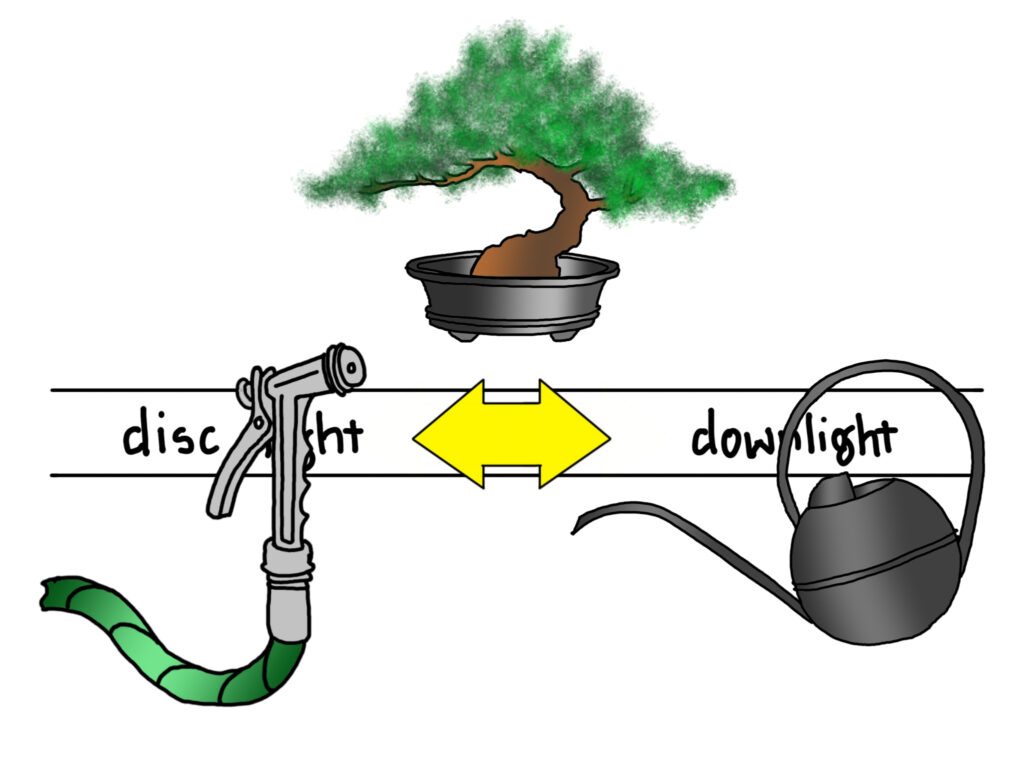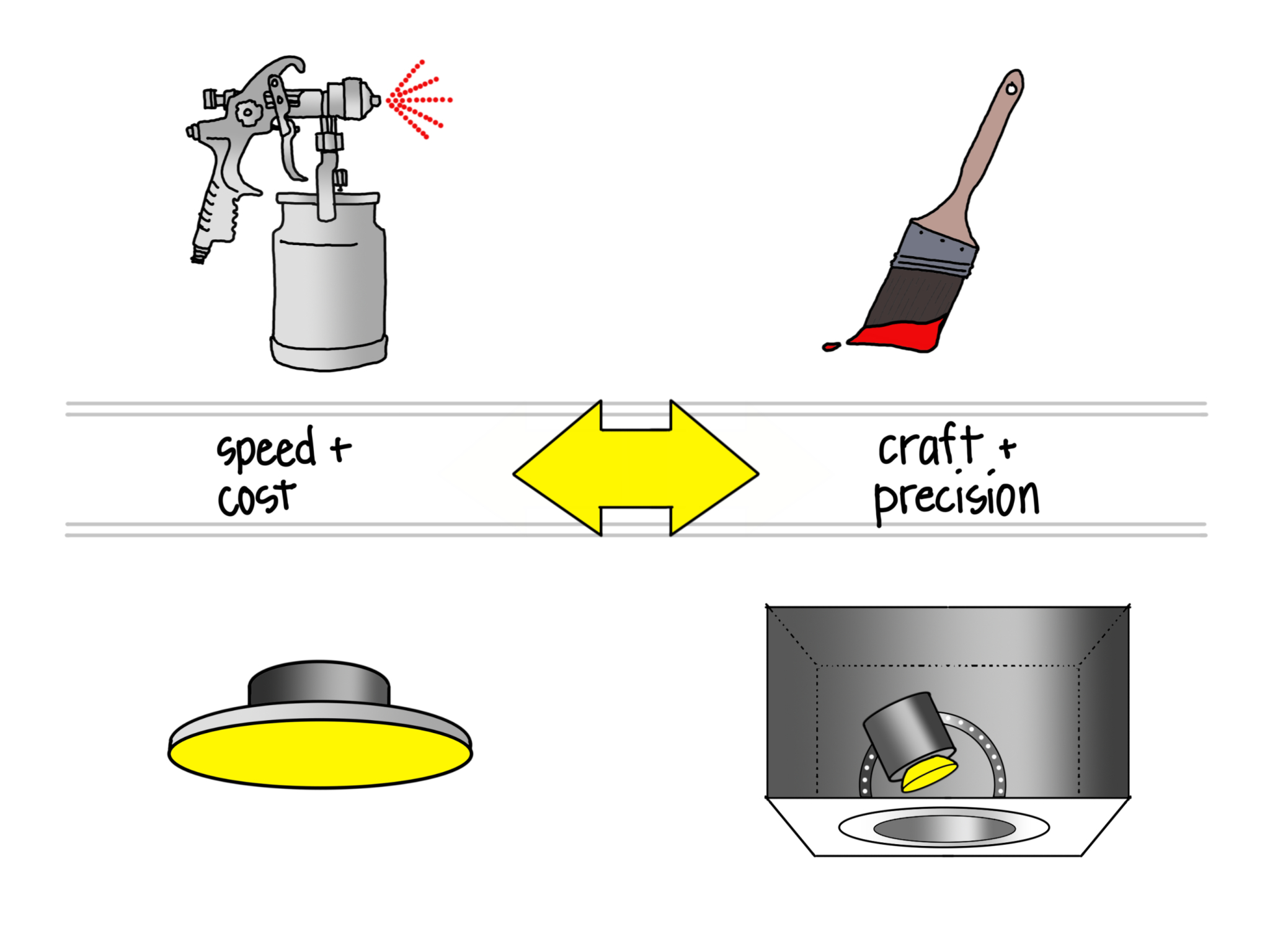A year ago, when I was planning my 2022 blog writing, I imagined a series on gear where I could talk shop about different fixtures and technologies. I saw myself geeking out on light bulbs, recessed adjustable downlights, tape light, step lights, and any other piece of equipment we use in our work every day.
Over the course of the year, however, my writing has evolved (or devolved – you can be the judge) into something a little less technical and a lot more conceptual. This week, I intended to write a blog post on optics, the series of lenses and reflectors that take light and shape it into something useful, like the eyeglasses on my face.
(Hmm…that’s an interesting analogy…without my eyeglasses, all I see is a blur. Without good optics on light fixtures, all you get is a blur. I guess that’s what I can write next time.)
When it came time to sketch this out, something else happened. Instead of discussing optical trains, I ended up sketching out a conceptual comparison of disc lights, the so-called “canless recessed lights” and performance adjustable recessed downlights. One fixture type has “full dispersion” optics that spread light everywhere, like a paint sprayer with a wide nozzle. The other has lenses or reflectors that shapes the light into a narrow beam that can then be focused on something important like a countertop or painting.
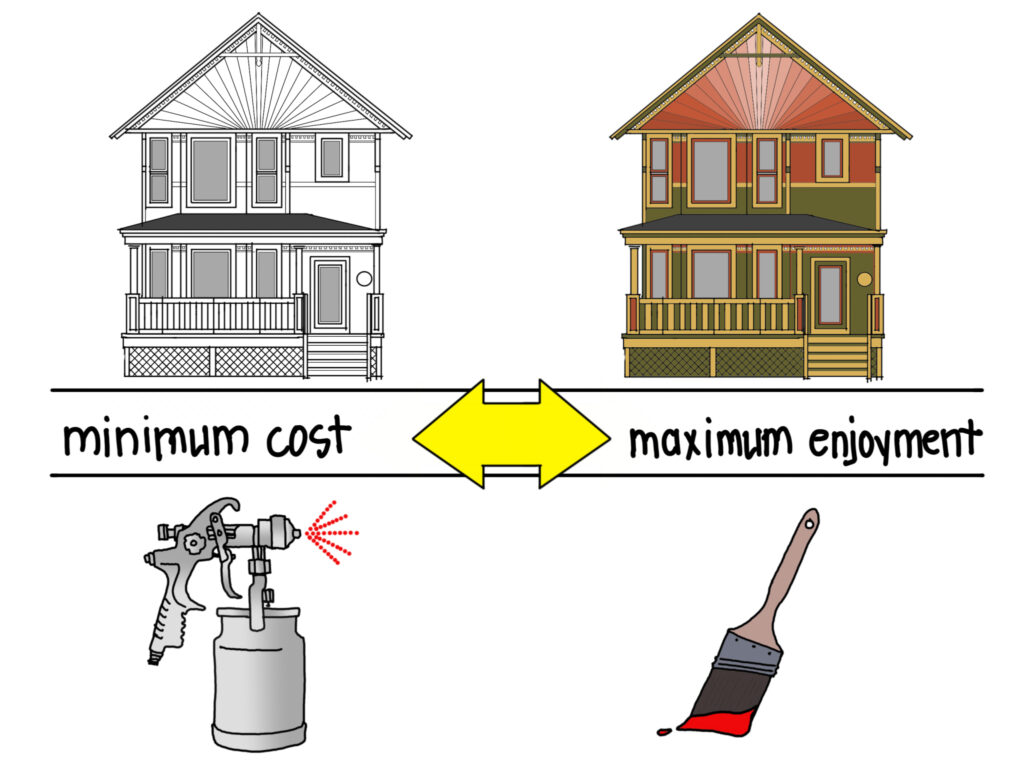
Your paint tool, in large part, can determine the outcome. Our neighborhood is full of century-old houses, some of them still sporting multiple levels of trim and detail. The easiest, fastest, cheapest way to get a fresh coat of paint on one of these houses is to spray the entire home with one color of paint, perhaps white. Like the house on the left, this is efficient and affordable. And just a little bit sad.
A few of the homes nearby sport a better-looking color scheme that draws on original intent. There may be three or four different colors in play, and even shades of these colors in significant details like the sunburst in the house above. I am not a painter, so please forgive my lack of technical knowledge, but the house on the right seems to be only possible with a good old-fashioned paint brush. Tiny layers of detail are painted with accent colors, window sashes stand out against contrasting trim, and a single porch column may have as many as four colors of paint. This is a home painted for maximum enjoyment.
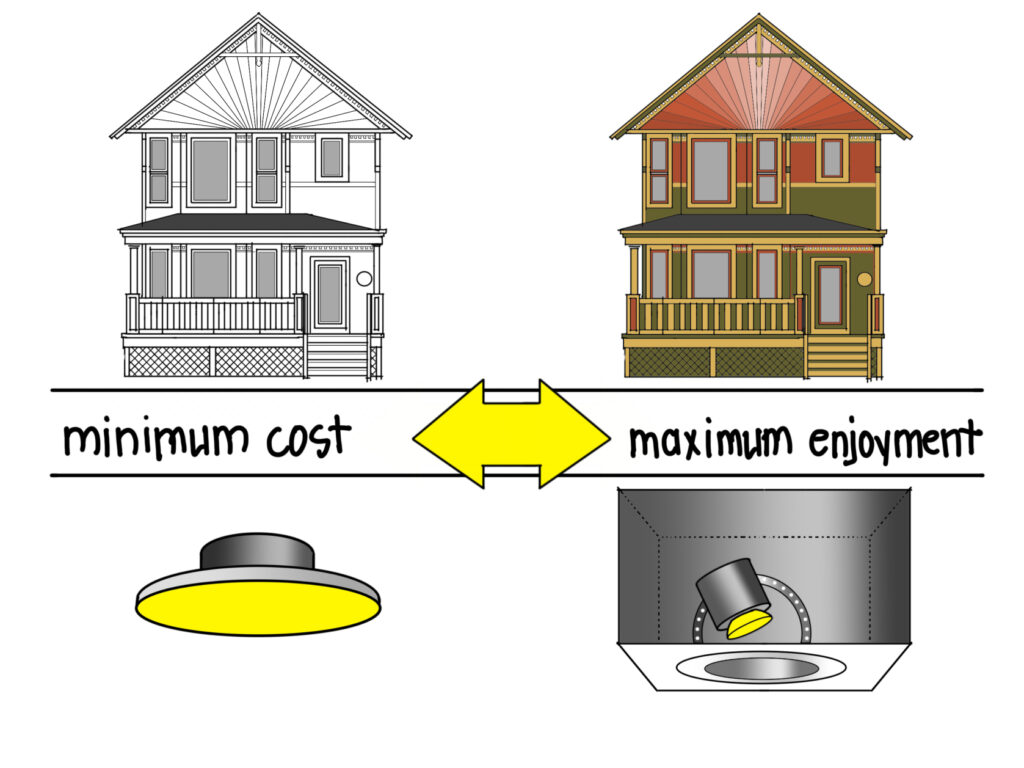
Lighting tools (gear) produce predictable results, just like paint brushes and sprayers. The “put paint everywhere fast” equivalent in lighting is the venerable disc light, also called wafer lights and a dozen other names. They are thin, require very little in the ceiling beyond a simple junction box, and put light all over the room like a fire sprinkler or paint sprayer. The result is a little bit like painting an old Victorian home with only white paint. It gets the job done, but the result is not particularly desirable.
It takes a very different kind of tool to get a very different kind of result. Recessed adjustable downlights with interchangeable optics are the angled trim brushes of lighting design, indispensable tools that deliver precise detail throughout a home. These cost more to use, like painting multiple colors by hand costs more than blasting a home with white paint. The results are entirely different. Instead of light everywhere from an glare-inducing disc light, light is carefully directed where it is needed most, allowing other areas to be less bright and therefore more comfortable and relaxing.
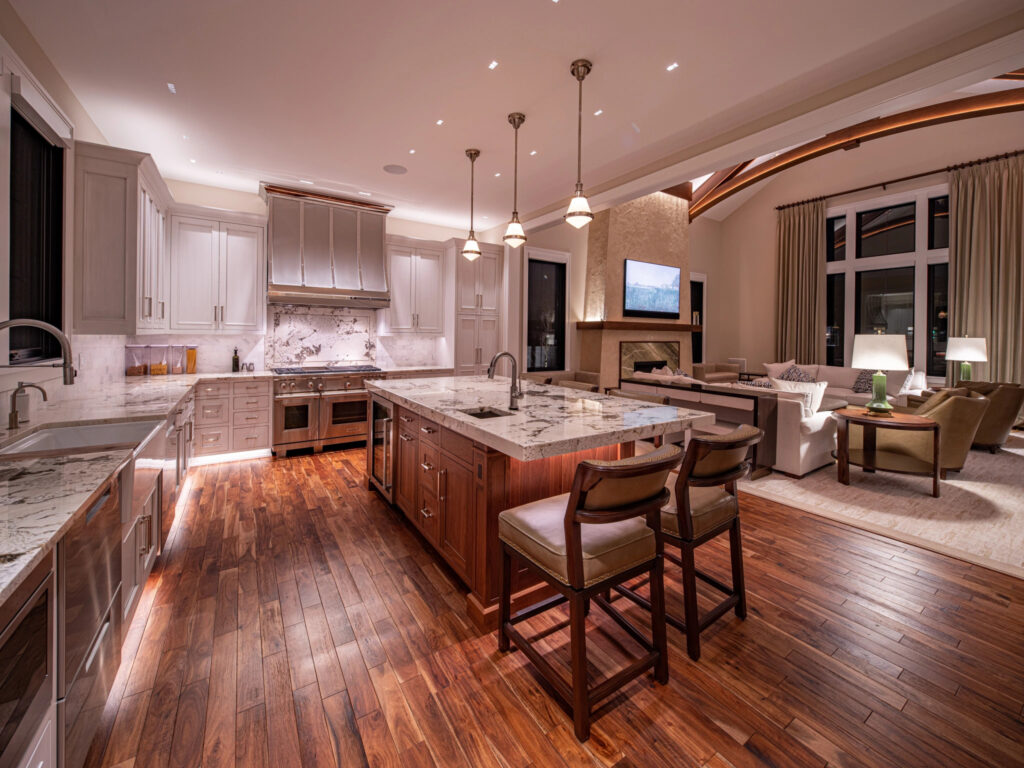
You can’t get this kind of result with disc lights. You need to use the right brushes.
Okay, one last attempt to make the argument. Let’s say you have a bonsai tree, one of those exquisite miniatures that requires years of dedicated care to cultivate and protect. You leave for vacation and enlist the help of a friend to keep the tree watered while you area away. Do you leave them disc lights or precision recessed adjustable downlights?
